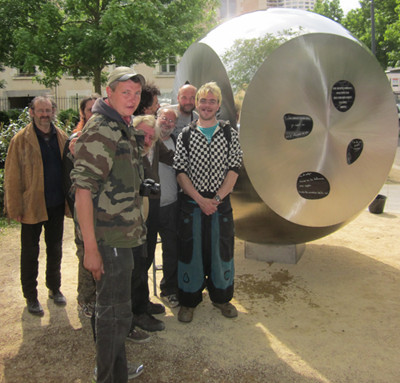




Visit the old town and discover unusual places. With your smartphone, walk the streets of Rennes and solve the puzzles hidden among the historic monuments




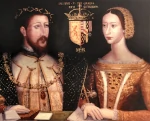
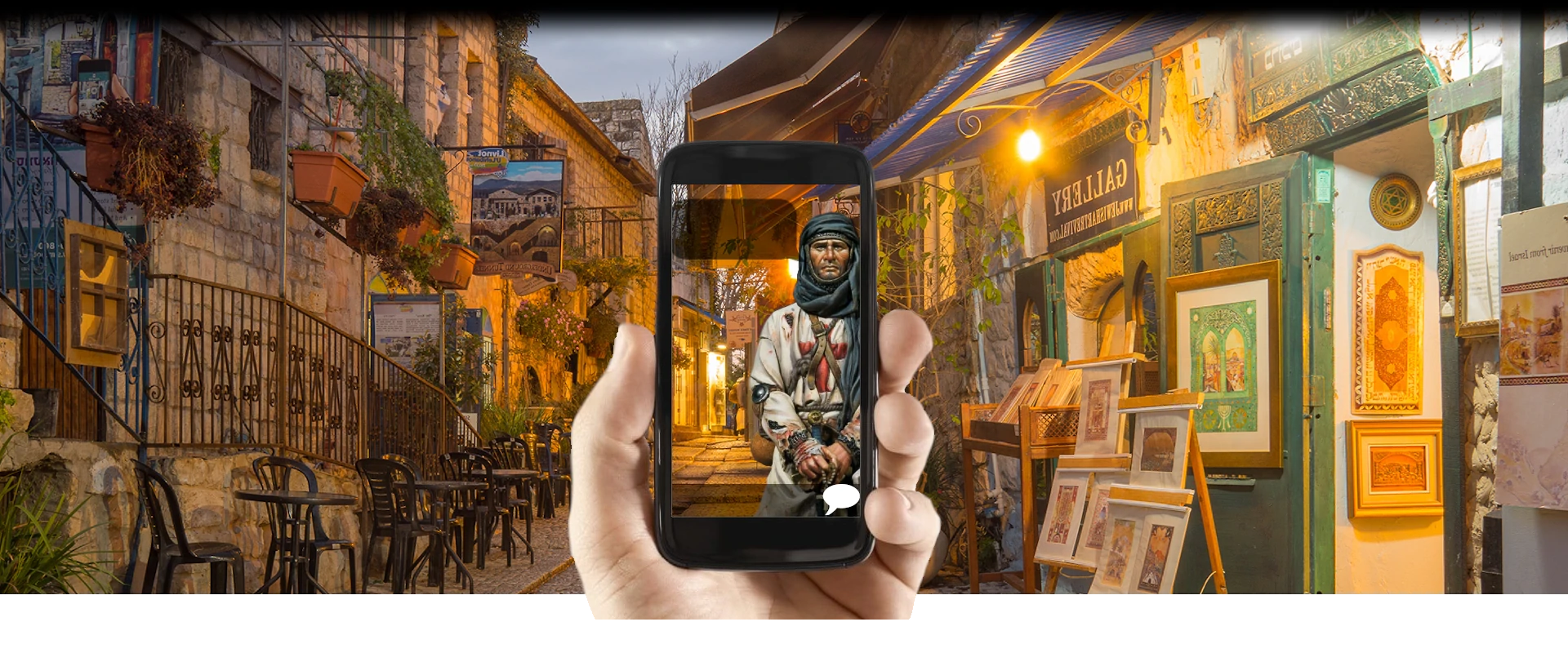
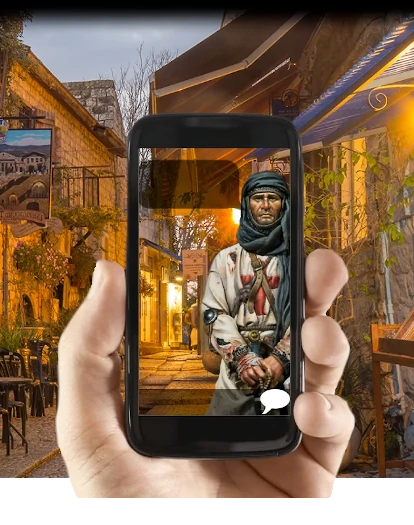
Your friend Sophie, responsible for the conservation of the old castle, discovered in the undergrounds of the keep an old Cryptex dating from the time of the Crusades.
She needs your expertise in symbol interpretation to uncover its secret.
During your adventure, you will meet celebrities from the city and discover its historic monuments, where puzzles have been hidden by an occult brotherhood: «The Mvllo’s circle»
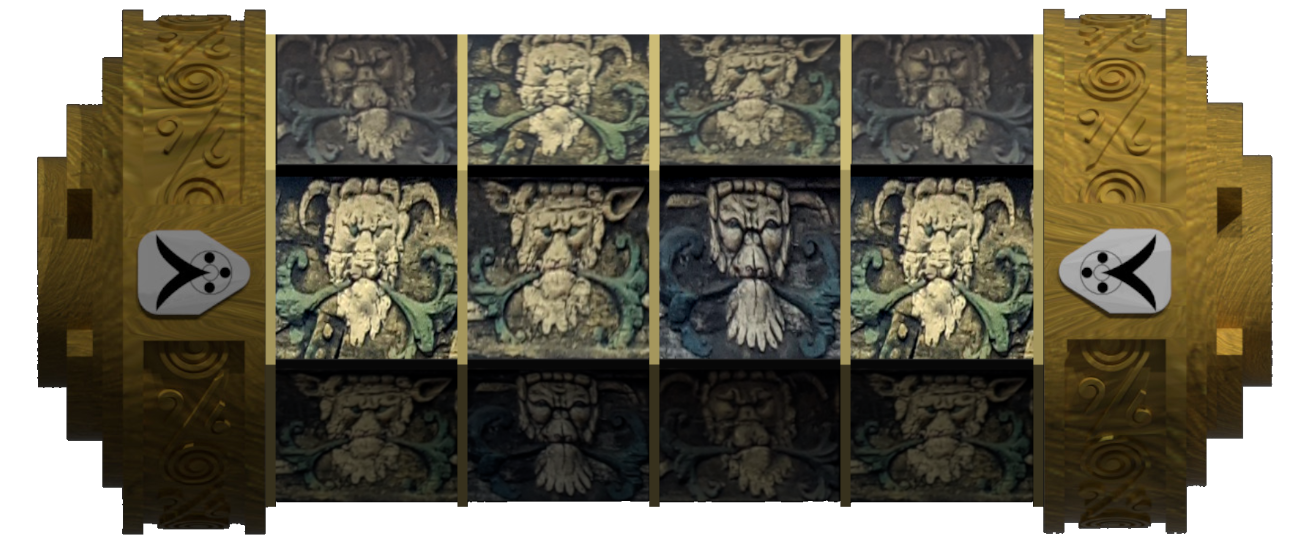

This adventure uses the same mechanisms than the «escape game». The rules aren't explicit. The player must guess what he has to do next by considering the elements available in-app and around him.
No other knowledge except these elements are needed to resolve the enigmas. Be vigilant, you will always need to use elements from the urban decor to solve each puzzle.


The adventure is based on characters, documents and historical facts related to Rennes.
You will travel through the old town and discover iconic places such as the Mordelaises Gates, St. Peter's Cathedral, the medieval streets, the Rennes opera house or the basilica of the Holy Sepulchre.
You will discover the history of the city by meeting characters such as the Duchess Anne of Brittany, the Marchioness Hélène de Coëtlogon, Saint Erwan de Kermartin, the writer Paul Feval, Conan I or even Publius Licinius Crassus.


Once everyone on your team has downloaded the app, go to the metro station République (line A).
See the MapWhen you have arrived at the departure point, open the application and click on the button:
«Let's start the Adventure»
The adventure can be done entirely offline. You will not need an internet connection during the game.

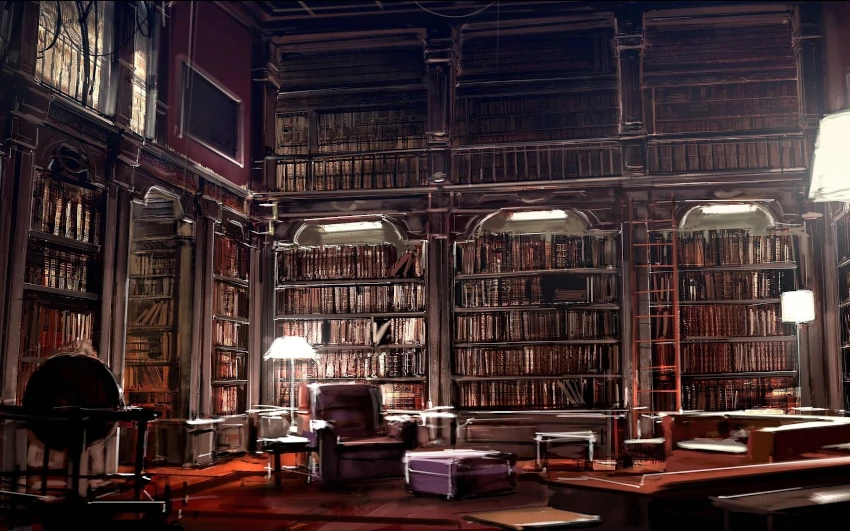
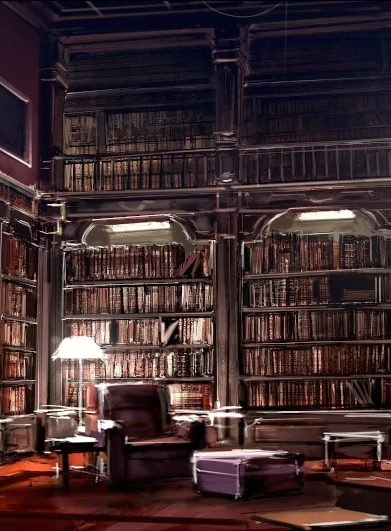
The city was founded in the 2nd century BC by the Redones, a Celtic tribe living in armorica (north west of Gaul). Originally the city was called Condate, which means "confluence" in Gallic. The oldest archaeological remains from this period were found under Saint-Pierre Cathedral.
The Redones surrendered to Rome in 52 BC when the Romans conquered the armorica. However 5 years later, the Redones rebel and send their warriors to join a Gaulish coalition led by Vercingétorix. They face Caesar's army in the Battle of Alesia.
After the defeat of the Gauls, Condate became the capital of Civitas Riedonum. Roman culture spread throughout the region and mixed with Celtic culture. This territory being very far from the borders of the empire, the city knows a long period of peace and prosperity.
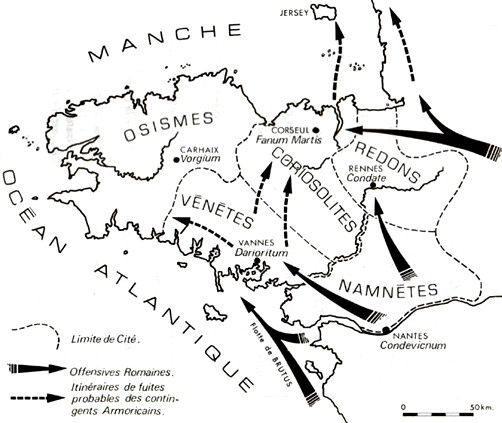
In the fifth and sixth centuries, after the fall of the Roman Empire, the Britons emigrated in armorica. They are fleeing the invasion of angles and saxes as well as the cooling climate. This is the time of Arthurian legends. King Arthur is one of the Celtic leaders who resists the Saxon invader. Located on the border of the Frankish kingdom and the Breton kingdom, Rennes becomes a stronghold.
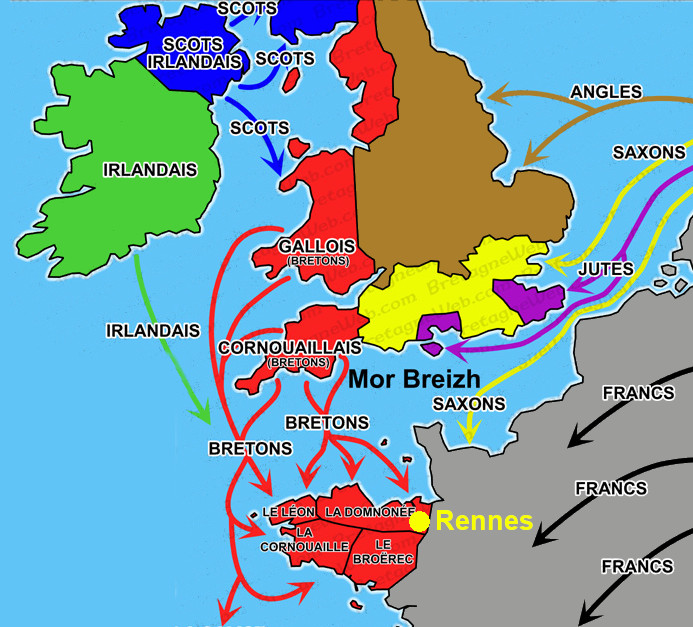
The Viking invasions of the 9th century weakened the kingdom which ended up losing its political autonomy for the benefit of France in 937. Brittany then became a duchy. Rennes is one of the capitals of the duchy with Nantes and Vannes. Until the 16th century this duchy was almost independent of royal power and itself provided all the sovereign functions: currency, taxes, war and peace, justice, religion. In 1498, France invaded Brittany. Duchess Anne, then aged 15, took refuge in Rennes, which was then under siege. In order to end the war and unite the two peoples, she married the king.
In the middle of the 16th century, the city of Rennes hosted the Parliament of Brittany and became the provincial capital. The city will then experience unprecedented prosperity and growth. During the French revolution, the city lost its status as a capital and became the chef-lieu of the Ille-et-Vilaine’s department. It was transformed into an industrial hub after the Second World War, notably with the establishment of automobile manufacturing factories.
This house was built in the 16th century. This type of construction appeared in Roman antiquity and then spread to France during the Middle Ages. The framework is made of wood and the walls are filled with cob, plaster or bricks. The cross beams have a meaning: they represent the cross of Saint Andrew, a Christian martyr crucified on an X-shaped cross. It ensures the protection of the house against fires. The cross has a second meaning, the X is also a multiplied sign which symbolizes fertility. This type of construction was particularly successful in Rennes because the city did not have a quarry but abundant oak forests.
Anne de Bretagne is for the Bretons the symbol of the region’s resistance to French imperialism. It is also important in national memory as a symbol of peace and harmony between the two nations.
In 1488, the Duke of Brittany did not have a male heir. Anne was designated as heiress by the nobles in order to prevent the King of France from reclaiming the duchy. The latter then threatens to invade this duchy which he considers his heritage. Anne married the powerful Germanic Emperor by mail to protect herself from the appetite of her bellicose neighbor. The king replied by sending his army and besieged Rennes where Anne took refuge. After two months entrenched behind the city walls, seeing that the German reinforcements would not come, Anne agreed to surrender only on the condition of marrying the King of France.
She was crowned Queen in 1491 and definitely ended the Franco-Breton wars. She is only 15 years old. When the King died, she married his successor. She was a skilled politician and worked all her life for the development and independence of Brittany. She is also known for having funded many artists and humanist authors.
Ermine was once used to make winter coats. Its fur is white except for the tip of its tail which is black. It is separated from the rest and then sewn back onto the mantle at regular intervals.
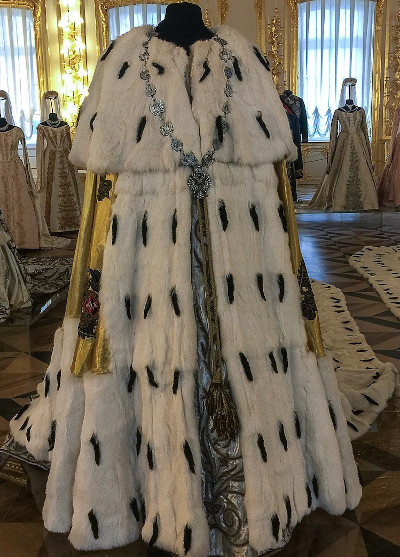
This black tail end was attached to the rest of the fur by three stitches, called ermine speckle. This element has become over time in stylized form a heraldic motif.

Because to its whiteness, ermine fur symbolizes moral purity and incorruptibility. It is for this reason that it was used by royal families and as official dress by magistrates. This symbol is also found in the clerical coat of arms. In the 12th century, Pierre de Dreux, became Duke of Brittany after an abortive career in the clergy. In remembrance of this past life, he adds the speckled ermine to his family crest. This symbol then spread to all of Brittany.
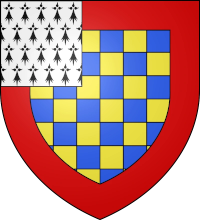
During antiquity, the place housed a sanctuary of an unknown god. In the 6th century, it was replaced by a cathedral. It was rebuilt in the 12th century as well as in the 16th century. It has hosted the relics of Saint Erwan since the 14th century.
The towers were built slowly over several centuries. This has resulted in each floor having its own architectural style:
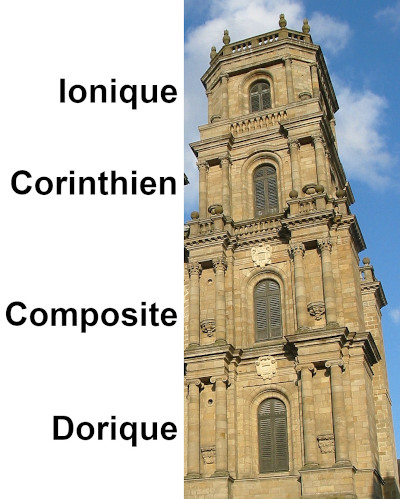
These are the coats of arms of the bishops and governors of Brittany from the 16th and 17th centuries. They are lighter because they are made of tufa stone, a soft stone, widely used in the Renaissance for ornamentation. At the top we can see above the pediment, a representation of King Louis XIV with his motto “Nec pluribus Impar”: above all men.
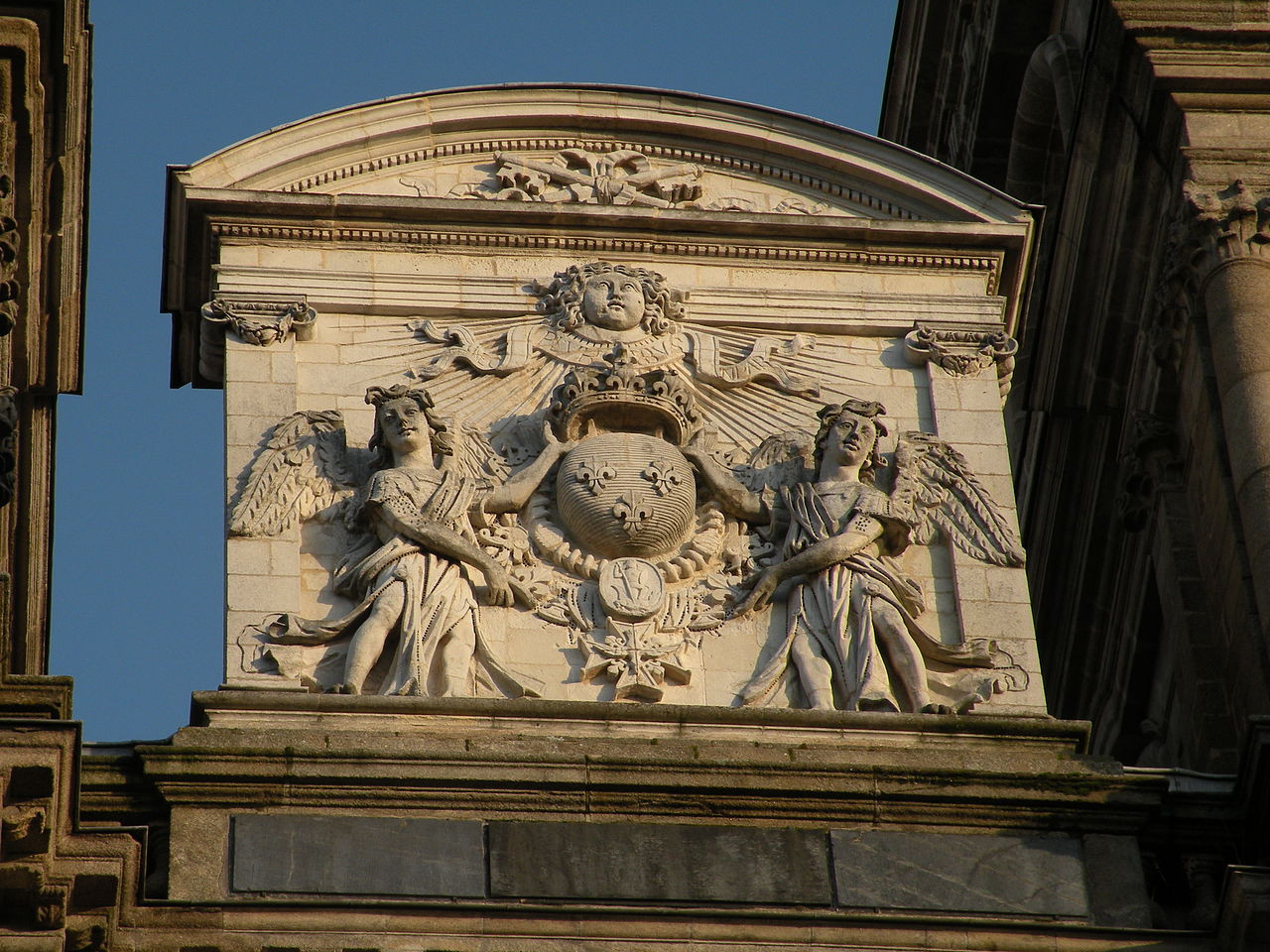
Hélène was the wife of Rennes' governor in the 17th century. She was famous for her kindness and generosity towards the poor. Since his death, his grave has been the subject of worship. The sick or their families come to take some soil next to his burial and bring it home in a pouch. They then bring back the pouch after 9 days so that Saint Helena intercedes on their behalf. Nowadays we can still see small bags of earth deposited next to his burial.
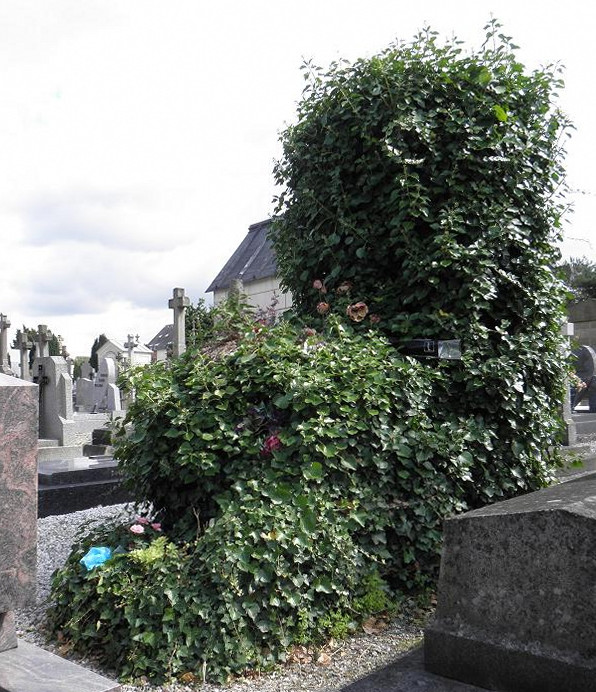
The 22th December 1720, a drunken carpenter argued with his wife and dropped a candle on a pile of wood chips. The fire is spreading very quickly from house to house. Indeed, at this time of year the houses are full of firewood. Soldiers from the nearby barracks react by urging residents to leave their homes. They also take the opportunity to loot their residences instead of fighting against the flames. In front of the immensity of the furnace, the Rennes people flee with their belongings and do not even try to fight the fire. The authorities have difficulty organizing themselves and end up after several days by tracing fire alleys by demolishing buildings. The disaster ended six days later when the rain began to fall.
The material results are heavy: 40% of the buildings burned down. However, there are only ten deaths. The reconstruction will take about thirty years. Some accuse the soldiers of being the origin of the scourge in retaliation for a recent revolt, a few claim to have seen fiery rain fall on the city. The accidental thesis is however retained by the authorities and everyone agrees on the fact that the statue of the virgin located in the Basilica of the Holy Savior leads to the miracle which ended the cataclysm.
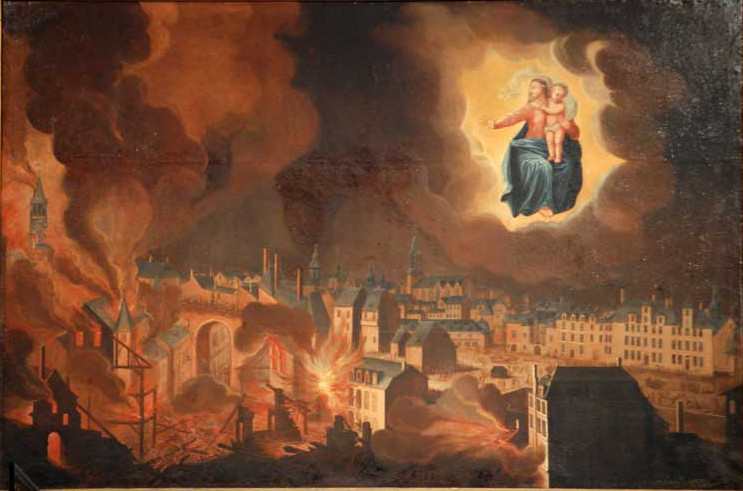
The Basilica of the Holy Savior was first built in the 12th century and then rebuilt in the 17th century. Its architectural style is classic: the composition is symmetrical, sober, the details correspond to the whole. At the time this style represented the ideal of order and reason.
She is also known as Notre-Dame of Miracles and Virtues. In the 14th century, when Rennes was under siege by the English, the candles lit by themselves and the statue of the Virgin Mary pointed to a slab in the ground. The besieged dug under the slab and discovered that the English had dug a tunnel to invade the city. They were thus able to repel the invasion. Since this miracle, the statue has performed many movements to warn the faithful of impending disasters or to cure diseases. It would even have protected the heart of the basilica in extremis during the fire of 1720 by causing rain to fall.
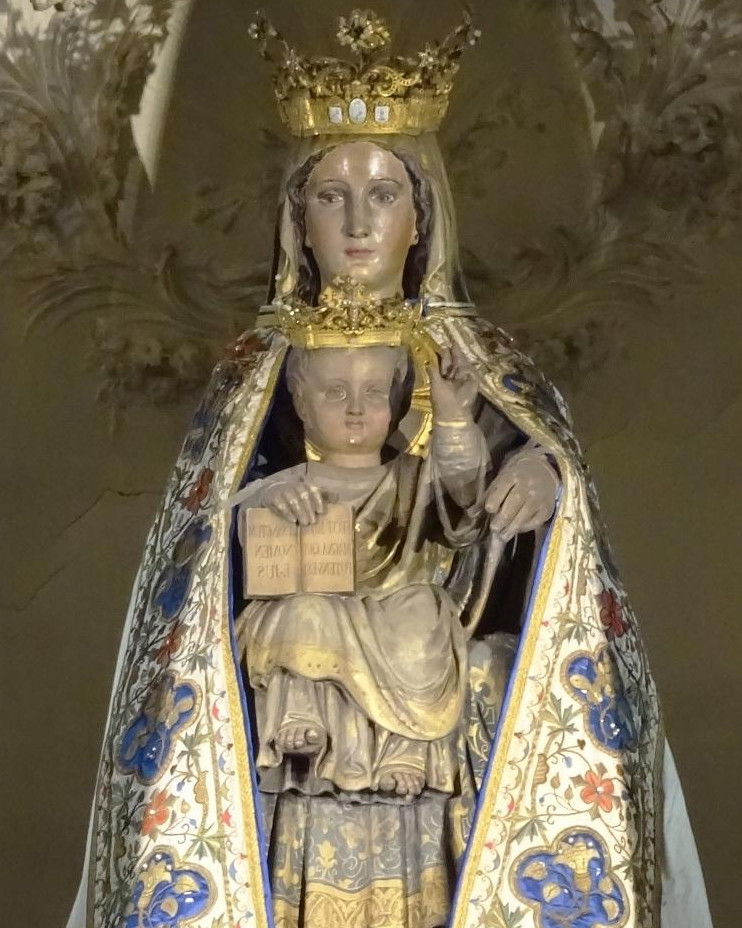
Also called Yves Hélory de Kermartin, Erwan is the patron saint of Brittany but also the patron saint of the professions of justice and law. Despite his noble ancestry and wealth, Erwan lives in deprivation for the benefit of the poor whom he invites to his table. He built many shelters for the underprivileged. He travels on foot through Brittany poorly dressed. One day, he meets an innkeeper who complains that a beggar eats the good smells of his kitchen for free. Erwan throws a few cents on the table. While the keeper is about to pocket them, Erwan collects the coins and declares: "the sound pays for the smell, to this man the smell of your kitchen, to you the sound of these coins". He was canonized in 1347 by the Pope. Every 19th of May a big popular festival celebrates him throughout Brittany.
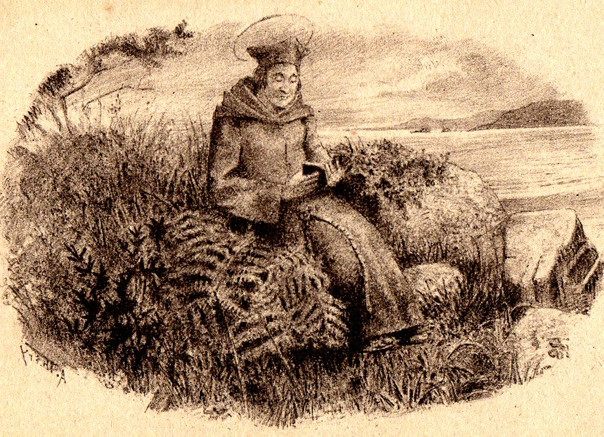
The bronze fountain was made in 1994 by Sylvain Dubuisson. He describes his work as follows: "Fountain dedicated to those whom eternity alone unites. A bronze chrysalis floats on a stele submerged in the center of a basin of purplish stone. Water streams down the sides of the stele where are engraved extracts from the story of Tristan and Yseult. At the ends of the chrysalis one can see inside in a mist of water the image of these two sleeping lovers lit by a ray of natural light."
At one end of the chrysalis, two holes allow us to see the two lovers entwined inside the cocoon.
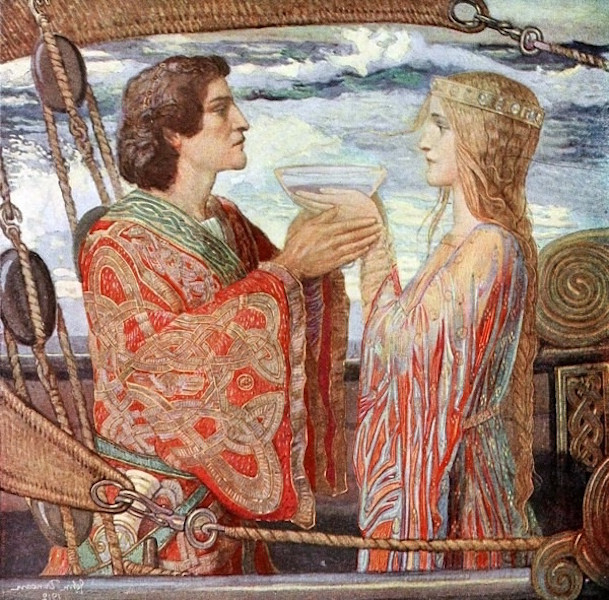
Paul Féval is a prolific writer born in Renne in the 19th century. He wrote more than 70 novels and around 30 theatre plays. He was in his time as famous as Honoré de Balzac or Alxandre Dumas. He was also a staunch monarchist activist and interested in the plots of the powerful lords and their grisly crimes. This experience will nourish these stories of swashbuckling as in his most famous novel: Le Bossu ou le Petit Parisien.

The town hall was built following the great fire of 1720. Below the clock you can see a niche left empty. It once housed the statue of Anne of Brittany kneeling in front of the statue of Marianne allegory of France. This monument described as a national disgrace was destroyed by an armed separatist group: Gwenn ha Du, white and black in French, in reference to the Breton flag.
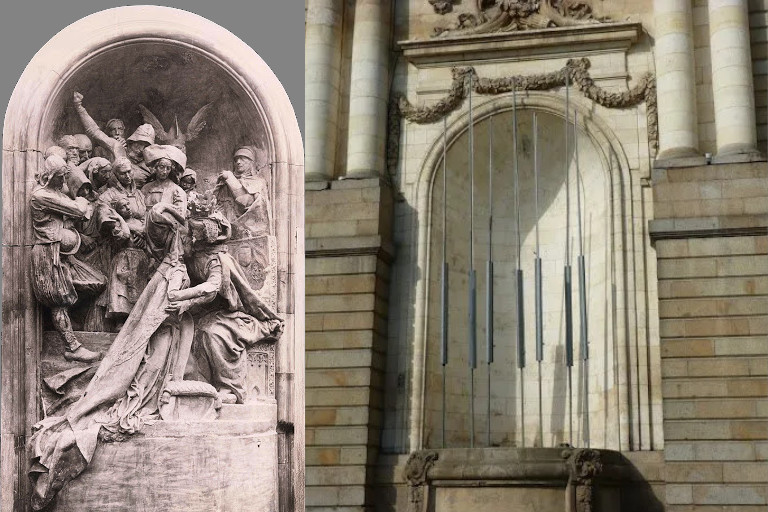
Built in the 19th century, it has the particularity of having a shape that adapts to the town hall building. It offers lyrical performances in an Italian hall and its attendance is 100%. The statues at the top of its facade represent the Greek muses.
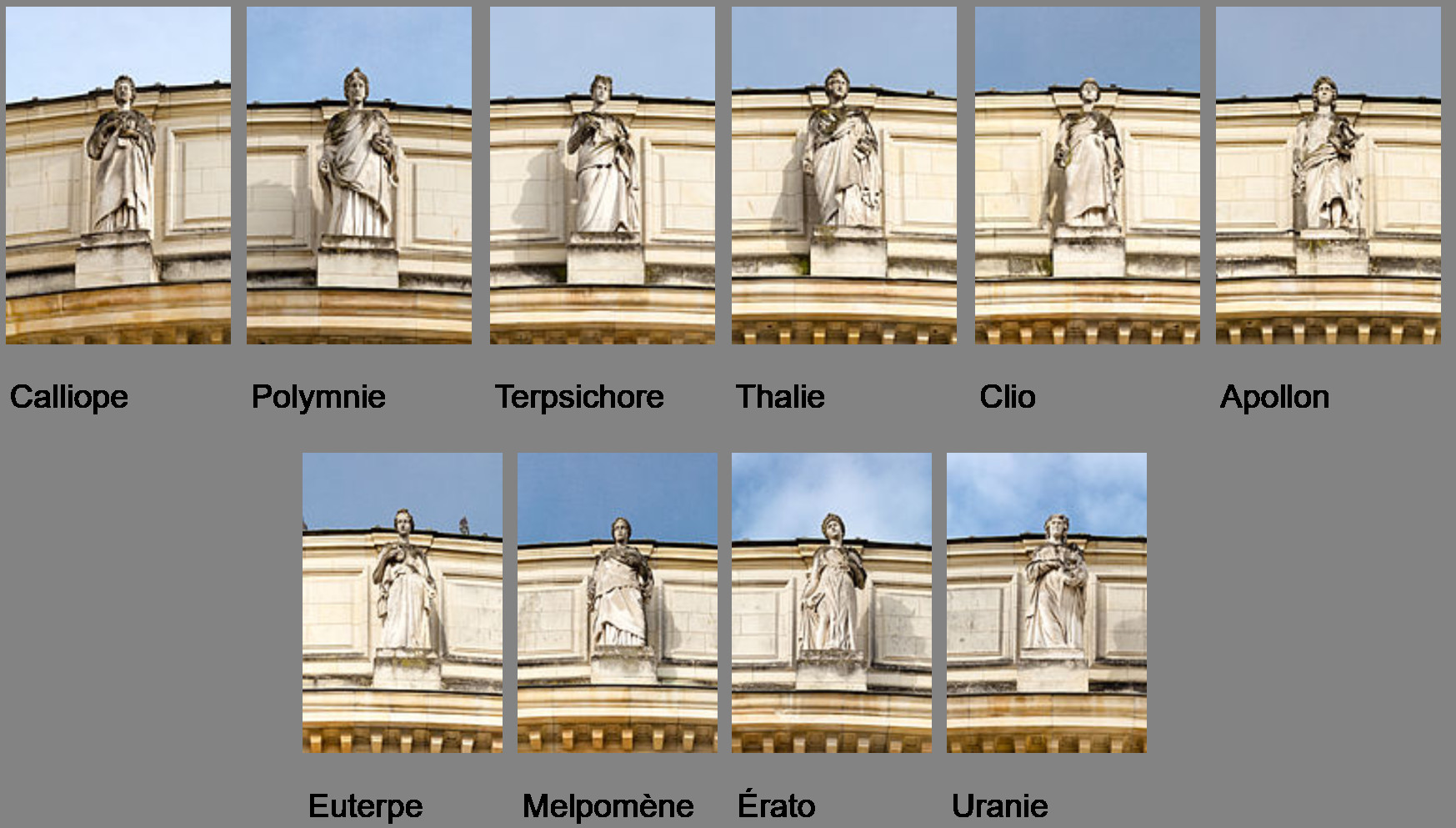
He was crowned Count of Rennes in the 10th century. He then seized Vanne by force of arms. At that time, Brittany was ruled by a duke from Nantes. Connan orders his murder. Thanks to a marriage, he claims to be the legitimate suzerain of Nantes and he is crowned Princeps Britannorum (Duke of Brittany). His descendants will inherit the title for 4 centuries.
This god comes from the Celtic culture and its original function is unknown. An important sanctuary existed in Rennes. Ancient inscriptions in a temple call him “the invincible”. During the Roman conquest he mixes with the invading god of war and becomes the god Mars Mullo. His cult spread to all of Gaul. The leader of the Redones, also high priest of the god, obtains Roman citizenship and becomes Titus Flavius Postuminus. Its Celtic name remains unknown. He is the oldest known personality of Rennes.
Before the Roman conquest, the armorica was populated by Celts who emigrated from Belgium to flee German invasions. Seven tribes then share the north-west of Gaul including the Redones.
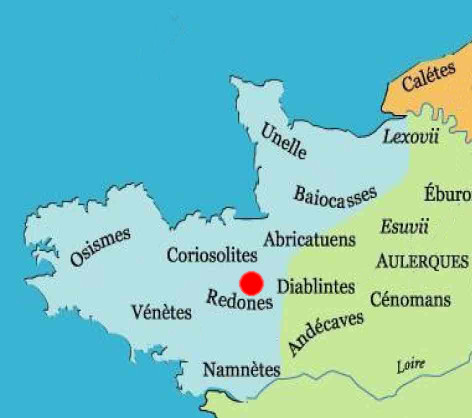
In -56 BC, Julius Caesar allied himself with Namnète who brought him knowledge of the land and good sailors. He divides his army into three contingents which invade the region. Publius Licinius Crassus takes the head of the 7th legions and subdues the Redones. The capital is plundered, but the Romans must leave to face other Gallic tribes. The Redones were definitively defeated when 4 years later, allied with Vercingetorix, the leader of the Gaulish coalition, they took part in the battle of Alésia.
The Duke of Brittany while being pursued by Vikings found himself cornered in front of a muddy river. He then saw an ermine pursued by a fox also cornered in front of the river. It attacked its predator rather than dirty its beautiful white fur. The duke then faced his enemies and exclaimed "Kentoc'h mervel eget em zaotra" which means "Rather die than the stain".

The square next to the river was once a quarry supplying sand to the city's construction sites. The Dice-shaped sculpture was installed in 2016. It is called “Path of Life”. The artist has collaborated with a collective of homeless people.
